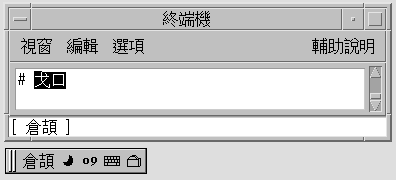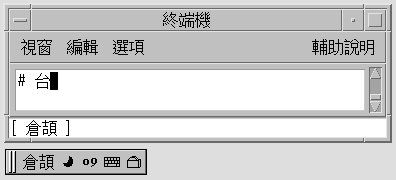TsangChieh Input Mode
TsangChieh is the default input mode that you use to type Chinese and other non-ASCII characters when ASCII mode is toggled off. TsangChieh conversion works with the radicals that compose Chinese characters. Each Chinese character has a keystroke sequence that is made up of the radicals that compose a character. A TsangChieh keystroke sequence often defines a single Chinese character. When a sequence defines more than one character, you are presented with different input choices.
You can also use the TsangChieh conversion mode to type the characters in the Chinese National Standard 11643. To type characters in this mode, press the Z key then the three-letter code assigned to the character by the standard.
How to Type in the TsangChieh Mode
To type Chinese characters in the TsangChieh input mode, type the Chinese radicals that make up the Chinese character. If you do not have a Taiwan Chinese keyboard that shows the radicals on the keycaps, refer to a picture of the Chinese keyboard to see how the Chinese radicals map to your keyboard.
-
Select the input method.
Follow the steps in the procedure How to Select an Input Method to select the input method.
TsangChieh appears in the status area.

-
Type ir.
The radicals appear highlighted in the preedit area.

-
Press the spacebar to commit the corresponding character.

- © 2010, Oracle Corporation and/or its affiliates
